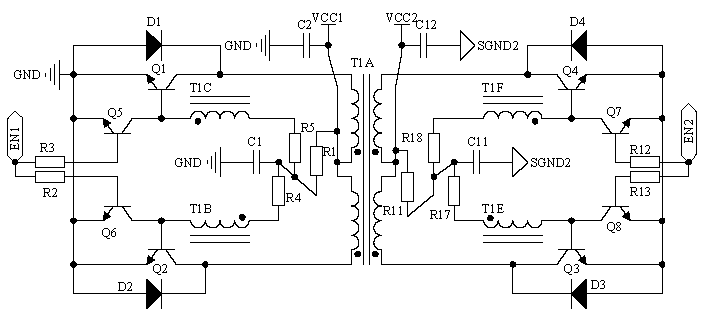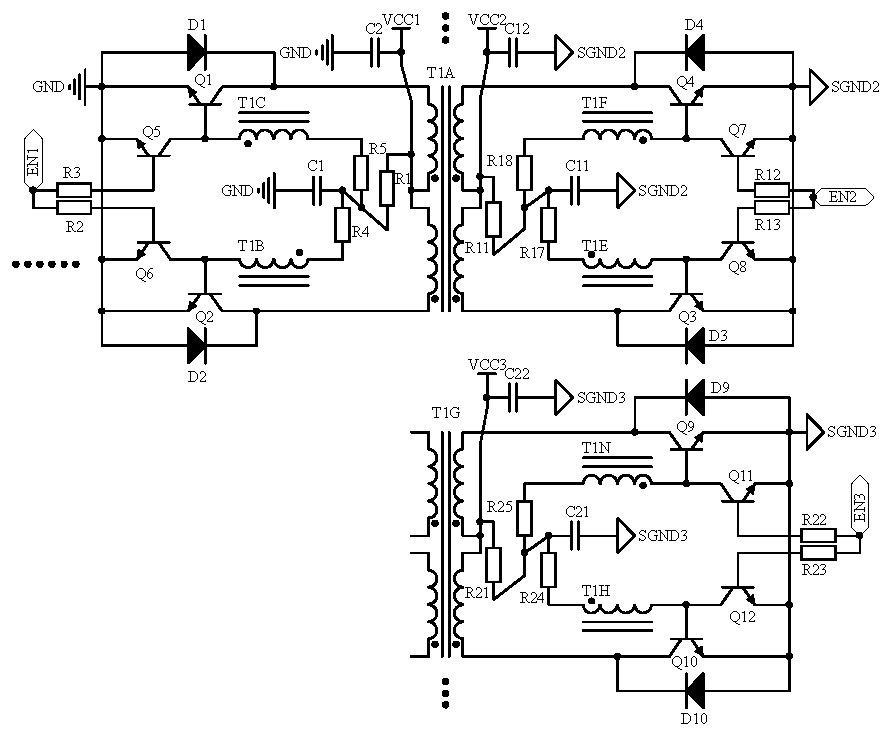Bidirectional or multidirectional DC-DC conversion circuit based on Royer
A technology for converting circuits and circuits, which is applied in the direction of output power conversion devices, electrical components, adjusting electrical variables, etc., to achieve the effect of avoiding control methods and small size
- Summary
- Abstract
- Description
- Claims
- Application Information
AI Technical Summary
Problems solved by technology
Method used
Image
Examples
Embodiment Construction
[0013] The accompanying drawings are for illustrative purposes only and cannot be construed as limiting the patent;
[0014] In order to better illustrate this embodiment, some parts in the drawings will be omitted, enlarged or reduced, and do not represent the size of the actual product;
[0015] For those skilled in the art, it is understandable that some well-known structures and descriptions thereof may be omitted in the drawings;
[0016] Below in conjunction with accompanying drawing and embodiment the technical scheme of the present invention is described further;
[0017] Such as figure 1 As shown, this circuit is a typical ROYER circuit diagram commonly used at present. Q1 and Q2 are turned on alternately; D1 and D2 are alternately rectified; electric energy is converted from VS to load R2;
[0018] Such as figure 2 As shown, the first self-excited push-pull circuit composed of Q1, Q2, T1A, T1B, T1C, R1, and C1, when the EN1 pin is selected to be low, the first s...
PUM
 Login to view more
Login to view more Abstract
Description
Claims
Application Information
 Login to view more
Login to view more - R&D Engineer
- R&D Manager
- IP Professional
- Industry Leading Data Capabilities
- Powerful AI technology
- Patent DNA Extraction
Browse by: Latest US Patents, China's latest patents, Technical Efficacy Thesaurus, Application Domain, Technology Topic.
© 2024 PatSnap. All rights reserved.Legal|Privacy policy|Modern Slavery Act Transparency Statement|Sitemap



